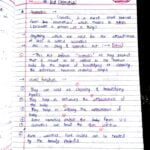•Warm Temp. 25-30°C. and survive as oospores
•High soil moisture (water (Resting structure) in
logging) soil for many years
•Over crowding of seedling
•Poor aeration in the soil
Favourable climatic conditions:
✓ Over crowding of seedlings.
” 111 drained nursery beds.
v’ Heavy shade in nursery.
1 High atmospheric humidity 90- 100 %
I High soil moisture.
” Low temperature below 24°c & Low soil temperature of about 20° C.
Pathogen:
✓ Thick, hyaline, non-septate mycelium.
• It produced irregularly lobed sporangia, which germinate to produce
vesicle containing zoospores.
I The zoospores are kidney shaped & biflagellate.
I Zoospores are sexually produced, they are light to deep yellow or
yellowish brown.
clamping off tobacco
Disease cycle:
“The fungus survives in the soil as oospores and which acts as primary
source of infection.
“The secondary spread is through zoospores disseminated through rain/
irrigation water.
Management:
➢Prepare raised seed beds with adequate drainage facility.
> Rabbing – slow burning of paddy husk before nursery sowing on
seedbeds. 7 kg/ sq.mt. Drenching with 1 % B.M. 3-4 lit/m2.
➢Avoid over crowding of seedlings 1 to 1.5 g/ 2.5m2.
➢Drenching with 9.2 % copper oxychloride or Mancozeb, 0.2 % and
repeat it at 4 days interval.
➢Drenching with Ridomil MZ 72 W.P. (Metalaxyl) 0.2% (8 g/lit) 3-4
lit/m2.
>Avoid excess watering of the seedlings.
➢Soil solarization in hot summer (May) with 100 LLDPE transparent
plastic films for 15 days, which controls pathogen, weeds, nematodes &
other harmful microorganisms.
‘Temp. . 32- 40 °C,
vo
).4 AM LT E 4G.1111ILES
relative humidity,
‘continues cropping of okra throughout the year.
Disease cycle
:- survive on infected plants
and collateral host/weeds
•Secondar• intertion :- by white fly
•Host Rano Weed-Ageratum, Croton
sparsiflorus, Hibiscus spp.
‘Okra yellow vein mosaic virus is not seed borne
‘Continuation of cycle through its wild hosts
•The insect vectors transmits the virus to the
main crop.
yellow vein okra
Management
. Tolerant varietif : ‘)cal onani kra, Pusa savani,
Janardhan, Haritha, Arka Anamika and Arka Abhay
2. Removal and destruction of infected volunteer plants
and collateral hosts
3. Erection of yellow sticky traps in the field to trap the
whiteflies
4. Vector management for restricting spread by spraying
systemic insecticides like Monocrotophos@ 1.5 m1/1,
Dimethoate or Methyl S Demetan @2 m1/1
Root knot nematode
C.O. :- Meloidogyne javanica, M. incognita
_ipto..
‘Above ground
‘stunted growth of plant
‘leaves are yellowish green to yellow
‘dropping and temporary wilting.
irrni ri rl
‘formation of knots or galls on the root.
• Spherical to elongated various sized galls on main and
lateral root
•chlorosis of plants
‘rarely plantillie from neme infection.
Disease cycle:
✓Primary source of infection: Seed-contaminated with spores, soil
-debris in the soil
✓Secondary source of infection: Conidia dissemination through
irrigation/rain water and farm implements.
collar rot g.nut
Management:
➢ Seed dressing with organo mercurials. In Gujarat- treat seeds with
thiram 3 g/kg or captan 4 g/ kg seed.
> Use healthy seed for sour g (witlic.e. damage seed used).
> Resistance variety runner type more infected/susceptible than
Spanish type.
• Application of castor or neem cake @ 500 k2/ ha at the time of
sowing.
> Avoid deep sowing of seeds.
• Deep ploughing during summer.
➢ Early sowing and crop rotation with chick pea and wheat.
Bacterial blight of Rice
DISEASE CYCLE: Spread by placing of rain,
irrigation water, wind
Symptoms
Infection CROP SEASON Blighting
phage
• OFF SEASON
PI •
▪ Favourable Survival :
v conditions of Pathogen +
‘Temperature 25-30 C ‘Pathogen is seed borne
‘Heavy rain,Heavy dew ‘Pathogen survive in
‘Flooding of water / infected stubbles/ debris in soil
Deep irrigation water -On collateral hosts
•Application of excessive N (some grasses)
fertilizers at late top dressing
‘Clipping of tip of seedlings at the
time of transplanting
Pathogen:
• Aerobic, gram —ve , non-spore forming, capsulated, rod shaped with 0.05 –
0.08 x 1- 2 p with monotrichus polar flagellum.
Favourable conditions:
• Clipping of tip of the seedlings at the time of transplanting.
• Heavy rain, heavy dew, flooding, deep irrigation water.
• Severe wind, temp. 25° — 30°C
• Application of excessive nitrogen, especially late top dressing.
Disease cycle:
• The pathogen survives in soil in infected stubbles and on collateral hosts
like Leersia hexandra, Cyperus rotundas, Cenchrus ciliaris, Cynadon
dactylon, Plantago najor.
The bacterium is also present in seed husk as well as in the endosperm.
• Secondary spread is through irrigation water and wind — borne rain.
• The bacterium enters in to the host through hydathodes, wounds and
stomata] openings
• •
bactertal leaf spot rice
Management:
> Use disease free healthy seeds.
> Avoid clipping of tip of seedling at time of transplanting.
> Avoid flood irrigation.
➢ Remove weed hosts.
D Use optimum doses of nitrogenous fertilizers.
➢ Seed soaking in ceresan, 0.1 % and streptocyline (3 g in 10 lit of water) for
8 hrs.
➢ Seed soaking in agrimycin (0.025%) and wettable ceresan (0.05%)
followed by hot water treatment at 52 o — 54oc for 10 minutes.
➢ Treating seeds with hot water 52oc for 10 min.
➢ Spray streptocycline 6 g / 20 lit + copper oxychloride 60 g.
> Spray Thiram+Carboxin 0.2%) + Streptocycline, 250 ppm.
> Spray streptomycin sulphate and tetracycline combination 300 g + copper
oxychloride, 1.25 kg/ha.
➢ Use resistant varieties-TKM-6, IR-42, IR-24, IR-28, Ratna, Sathi, Ambika
>The pathogen perpetuates in soil living on affected host tissues. >The pathogen also found infecting seed (Seed borne). The spots
>The pathogen also found infecting seed (Seed borne). The spots
are spread by rain splashes. The fungus spread through
implements and insects.
Favorable condition:
)=. High relative humidity coupled with higher
temperatures favour disease
> Common in high Temperature 30 — 32°C,
A Wet weather for spread of disease, while,
infection take place at 29°C and for disease
development 26°C.
phomopsis blight brinjal
Management:
>Seed dipping in hot water at 50°C for 30 min.
>Spray difolatan 7SWP 0.2% or captan 75 WP 0.2% in nursery
and field at 7 —10 days interval
>Crop rotation for 2 to 3 years
>Collecting the diseased plants and destroying them
>Removal and destruction of diseased crop debris
>Spraying zineb @0.2% or BM@ 0.8% or [email protected]%
at 20 days interval found effective
>Resistant variety: Florida Beauty.
Wild resistance donors: Solanum gilo, S. macrocarpa and S.
integrifolium
CorActio
&wink’sIlea lopnote
4.1f07″.”746,-.410:
6 7 6
Houstoria
0
6%Q, CookIkon
st,
LbataMd
eacesporips
AiIcosPans IdettedPlant
ASCU&
Ttt%
GPINIndsews elsiessilhecis.wryAlms cluissollisciaa
Disease cycle of Powdery mildew of Sesame
P. M. sesame
Management:
• Remove the infected plant debris and destroy it.
• Spray wettable sulphur 80% WP @ 30 g/10 litre of water or
sulphur dust @ 25 kg/ha and repeat after 15 days.
• Grow resistant varieties like Rajeshwari, SI-1926, KRR-2, etc.
(2) Root / Stem / Charcoal rot
Causal Organism: Macrophomina phaseolina
Symptoms:
‘,Disease symptoms found on the root, stems, capsules and seeds
of the infected plants.
Roots and collar regions of the stems show brown discoloration
that extends upwards, resulting in discoloration of the most of
the part of the stem.
chloTosis 9. nut
pmement:
k solution of 100 g ferrous sulphate and 10 g. cit:
itre of water sprayed at 10 days interval for 2-3 til Chelated iron 2% sprayed at 10 days interval for 2-3
Chelated iron 2% sprayed at 10 days interval for 2-3
>Spray 40 g.FeSO4 + 20 g. lime + 10 lit. of water.
10:14 AM SSC 4A11111111111111ftui
>Underground rhizomes look healthy
>In the field the disease occurs sporadically
and after spreads in concentric rings
Disease cycle:
Primary Inoculum- Chlamydospores in soil &
propagules in infected rhizomes/suckers
Sec. Inoculum: Through macro & micro conidia along
with irrigation/rain water
➢ Pathogen is soil borne invades through the roots or
wounds in the rhizome.
Favourable Condition:
1.Light textured, acidic soil
2.Soil infestation with Radopholus similis, M. incognita.
3.Frequent irrigation
panama wilt banana
panama wilt banana
Management:
Management:
1. Use of disease free suckers for planting
1. Use of disease free suckers for planting
2. Avoid ill drained soils
2. Avoid ill drained soils
3. Flood fallowing for 6 to 24 months or crop rotation with puddle rice
3. Flood fallowing for 6 to 24 months or crop rotation with puddle rice
rice
4. Application of lime to infested pits @ 1 to 2 kg/ha
4. Application of lime to infested pits @ 1 to 2 kg/ha
5. Soil fumigation with 5% formaldehyde.
5. Soil fumigation with 5% formaldehyde.
6. Dipping of suckers in carbendazim (0.1%) solution before
6. Dipping of suckers in carbendazim (0.1%) solution before
planting
7. Neem cake + Trichoderma viride should be applied in planting
7. Neem cake + Trichoderma viride should be applied in planting
pits
8. Grow resistant var.- Cavendish banana, Basrai
8. Grow resistant var.- Cavendish banana, Basrai
Disease cycle:
➢Primary source: The disease is seed and soil borne. The
bacteria also survive on weed host.
>Secondary spread: by wind, water, rain, man, implements.
bacterial leaf spot sesame
Management:
• Seed treatment should be done with Agrimycin-100 (250 ppm)
or streptocycline suspension (0.05%) for 30 minutes for
preventing seed borne infection.
• Spray mixture of streptocycline (0.5 gram) + copper
oxychloride (40 gram) in 10 litre water after initiation of the
disease. Second spray should be done after 15 days.
Note: Bacterial leaf spot of sesame also caused by
Pseudomonas syringae pv. sesami
Favorable conditions:
Warm humid weather.
➢The disease is severe generally during late khanf and rabi
seasons.
Disease cycle:
>The fungus is an obligate parasite and survives as cleistothecia in the infected plant debris. ➢Primary infection is usually from ascospores from perennating
in the infected plant debris. ➢Primary infection is usually from ascospores from perennating
➢Primary infection is usually from ascospores from perennating
cleistothecia. >The secondary spread is carried out by the air borne conidia. ➢Rain splash also helps in the spread of the disease.
>The secondary spread is carried out by the air borne conidia. ➢Rain splash also helps in the spread of the disease.
➢Rain splash also helps in the spread of the disease.
3. M. greengram Management : >Remove and destroy infected plant debris. >Spray carbendazim 500 g. or wettable sulphur 1.5 kg. or tridemorph 500 ml./ha at the initiation of disease and repeat 15 days later. >Grow resistant varieties like LBG-17, PDU- 10, ICI -12/2 and PLU- 322.
Management : >Remove and destroy infected plant debris. >Spray carbendazim 500 g. or wettable sulphur 1.5 kg. or tridemorph 500 ml./ha at the initiation of disease and repeat 15 days later. >Grow resistant varieties like LBG-17, PDU- 10, ICI -12/2 and PLU- 322.
>Remove and destroy infected plant debris. >Spray carbendazim 500 g. or wettable sulphur 1.5 kg. or tridemorph 500 ml./ha at the initiation of disease and repeat 15 days later. >Grow resistant varieties like LBG-17, PDU- 10, ICI -12/2 and PLU- 322.
>Spray carbendazim 500 g. or wettable sulphur 1.5 kg. or tridemorph 500 ml./ha at the initiation of disease and repeat 15 days later. >Grow resistant varieties like LBG-17, PDU- 10, ICI -12/2 and PLU- 322.
tridemorph 500 ml./ha at the initiation of disease and repeat 15 days later. >Grow resistant varieties like LBG-17, PDU- 10, ICI -12/2 and PLU- 322.
days later. >Grow resistant varieties like LBG-17, PDU- 10, ICI -12/2 and PLU- 322.
>Grow resistant varieties like LBG-17, PDU- 10, ICI -12/2 and PLU- 322.
PLU- 322.










